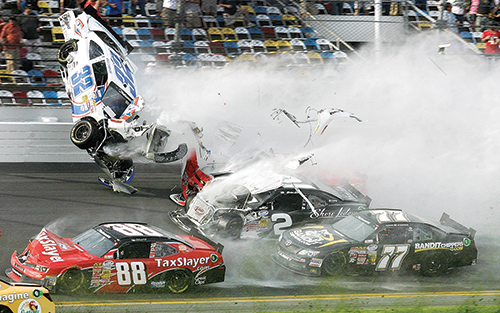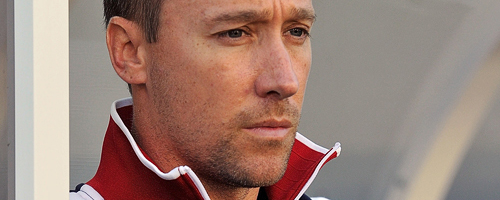Leading up to the weekend of the Daytona 500, the discussion was almost exclusively centered on Danica Patrick. The former open-wheel racer made headlines when she qualified in the pole position for the Great American Race. Out in front of the field for five of the day’s 200 laps, she would become the first woman to hold the lead in any top-level NASCAR event under green-flag conditions. Patrick would finish eighth overall, also the best-ever final result achieved by a female in the 54-year history of the race.
Basement Notes: Hard lessons at Daytona

Leading up to the weekend of the Daytona 500, the discussion was almost exclusively centered on Danica Patrick. The former open-wheel racer made headlines when she qualified in the pole position for the Great American Race. Out in front of the field for five of the day’s 200 laps, she would become the first woman to hold the lead in any top-level NASCAR event under green-flag conditions. Patrick would finish eighth overall, also the best-ever final result achieved by a female in the 54-year history of the race.
But the most important story to emerge from Daytona had nothing to do with the social significance of Patrick qualifying through the checkered flag. The focus of the main event had abruptly shifted the day before, when NASCAR ran its second-tier Nationwide Series event at Daytona International Speedway on Saturday afternoon. In the final turn of the final lap, Regan Smith and Brad Keselowski made contact at the front, setting off a chain reaction and sending Kyle Larson’s car airborne. Slamming into the catch fence, the front end of Larson’s car was shredded by the barrier and hot, twisted metal and rubber shot through the audience on the other side. By the time the last of the flying tires and debris had settled in the stands, two fans were in critical condition among the more than 30 people injured in the wreck.
Accidents are nothing new in NASCAR. For some fans of the sport, like those fight enthusiasts among hockey fans, the wreckage is one of the primary reasons for attendance, and deep in the recesses of every driver’s mind, they know that they are involved in an inherently dangerous occupation. Twelve years ago, Dale Earnhardt was killed in a collision in the same turn where Larson went flying; Patrick’s last trip in an IndyCar cockpit ended with the death of two-time Indianapolis 500 champion Dan Wheldon at the 2011 season finale in Las Vegas. Every athlete who races automobiles for a living knows that safety on the track is never a given. All the success in the world does nothing to guarantee there will be another chance the following weekend.
Fans revel in this fact, knowing that the drivers are pushing the limits largely because their chances for a breakthrough are finite—when every race could be your last, the incentive is even greater to go out in a blaze of glory. But the fans probably gave little heed to their own safety when they arrived at Daytona on Saturday. They came despite the warning printed directly on their tickets releasing Daytona International Speedway from any claims of negligence, and despite the long line of tragic examples of exactly what can go wrong when cars whip across asphalt at nearly 200 miles per hour.
So I guess we learned a couple of things from the Daytona 500 this weekend. Sure, we learned that a woman can compete with the men at the venerable track (if we still needed to be convinced, that is), as Danica proved she is more than simply an endorsement gimmick. More importantly, though, we got a frightening reminder that the safety risks accepted by each driver extend to every person that comes out to the track, regardless of any presumed level of protection at a public venue. In the end, there is no such thing as complete security—whether you’re behind the wheel or watching from the other side of the fence.








Zach- this is a great article reminding all of us that is doesn’t matter which sport a fan is attending there is always a danger to the fans as well as the participants.
Danica Patrick did take 8th in the Daytona 500, and yes it is a first in history that a women accomplished this. My personal thoughts are this has always been a male sport, and I feel it should stay a male sport. Danica has been on commercials, ads, posters, etc… What about all the other drivers, they do not get the recognition that Danica recieved just because she is a beautiful young female. Nascar should continue to be a male sport, in my opinion.
Again a great article Zach.